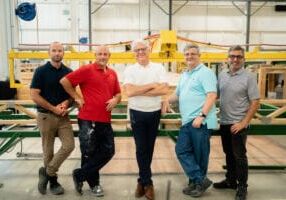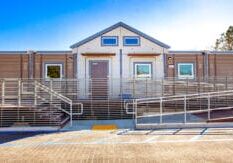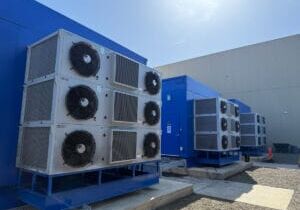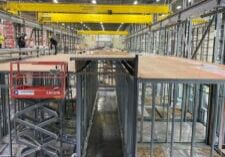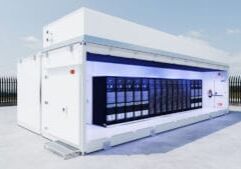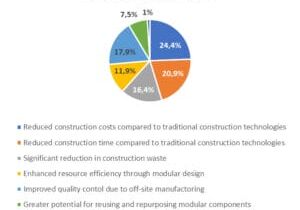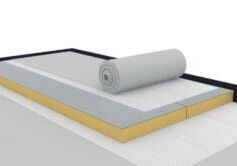Modular Research and Real World Results

Dr. Jin Ouk Choi is an Assistant Professor of Civil & Environmental Engineering & Construction at the University of Nevada, Las Vegas (UNLV). He has research and industry experience in modular construction, standardization strategy, construction engineering, and construction management.
Dr. Jin Ouk Choi has published dozens of academic articles and conducted numerous research studies on modular construction. He’s an academic advisor for the Construction Industry Institute’s [CII] Modularization Community for Business Advancement.
Choi says many stakeholders don’t fully understand the differences between modular and conventional construction. “It sounds very simple and obvious. But, on a modular project, there are so many things that need to be planned and executed differently from conventional construction,” he says. “Many failed modular projects showed that they have failed to execute their modular projects differently or implement the critical success factors.”
Some of Choi’s research has investigated the links between “modularization Critical Success Factors and performance of industrial modular projects.” A Critical Success Factor (CSF) is defined as something necessary for achieving success on modular construction projects. Choi and his colleagues have identified 21 CSFs.
An article co-written by Choi, which appeared in the Journal of Construction Engineering and Management, describes the five most important CSFs as follows:
- Module Envelope Limitations: Preliminary transportation evaluation should result in understanding module envelope limitations.
- Alignment on Drivers: Owner, consultants, and critical stakeholders should be aligned on important project drivers as early as possible in order to establish the foundation for a modular approach.
- Owner’s Planning Resources & Processes: As a potentially viable option to conventional stick-building, early modular feasibility analysis is supported by owner’s front-end planning and decision support systems, work processes, and team resources support. Owner comfort zones are not limited to the stick-built approach.
- Timely Design Freeze: Owner and contractor are disciplined enough to effectively implement timely staged design freezes so that modularization can proceed as planned.
- Early Completion Recognition: Modularization business cases should recognize and incorporate the economic benefits from early project completion that result from modularization and those resulting from minimal site presence and reduction of risk of schedule overrun.
Choi says many stakeholders don’t fully understand the differences between modular and conventional construction. “It sounds very simple and obvious. But, on a modular project, there are so many things that need to be planned and executed differently from conventional construction,” he says. “Many failed modular projects showed that they have failed to execute their modular projects differently or implement the critical success factors.”
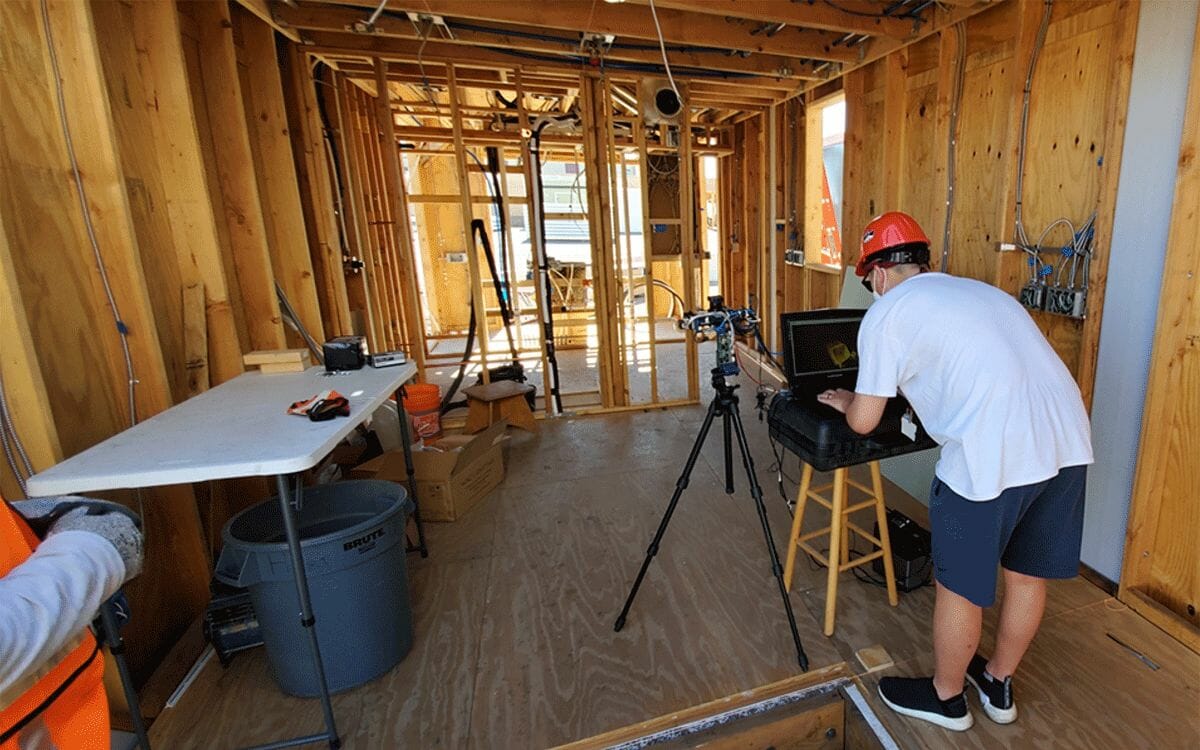
Dr. Choi partnered with students from University of Nevada, Las Vegas to design and construct a net-zero home for the 2020 Solar Decathlon. The team placed third in the nation. Read more about the team's solar-powered entry below.
Education
Everyone from homeowners to major property developers need educating about modular construction, Choi says. “The public having the wrong impression of modular buildings — as being poor quality and too similar to one another — is a major barrier to the industry.”
But, perhaps even more importantly, students in architecture, construction management, engineering, and so on need to be educated about modular construction so that future modular projects have a greater chance of success. “Barely any architecture or engineering programs have courses on modular construction. Very few professors in the United States can teach it,” Choi says. His view is that the education system will continue teaching conventional, stick-building approaches until there is enough industry influence and investment. “Currently, people don’t have the necessary education in modular construction, which means training staff at modular companies and executing projects will take more time and be more costly,” he says.
As well as teaching students about modular construction, Choi also maintains the importance of primary research and innovation, with collaboration between industry and academia. “In the past, studies have mostly been limited to surveys, which identify perceptions of risks and advantages,” Choi says. “But we really need more rigorous, systemic, evidence-based studies.”
He has a call-to-action, a request to MBI to facilitate alliances between the modular industry and academia. “Industry alliances — similar to those at the CII, based at the University of Texas at Austin — can lead future generations into the industry with a positive influence for businesses.”
Related Listening:
Exploring the Critical Success Factors of Modular Construction w/ UNLV's Dr. Jin Ouk Choi
In this episode of Inside Modular, Dr. Jin Ouk Choi, assistant professor at the University of Nevada, Las Vegas, discusses his research into the critical success factors (CSFs) of modular construction projects and identifies the key CSFs that modular stakeholders should be utilizing. Dr. Choi also discusses the benefits large modular companies are seeing from incorporating these CSFs into their projects.
The Greatest Potential
Choi believes the residential sector — both multi- and single-family buildings — has the most potential for modular construction. Lack of housing supply is driving prices up so there’s very little affordable housing available, and the problem is not going away soon. “The construction industry doesn’t have enough workers to deliver enough houses to meet the demand and the labor shortage problems will last for a while, or even become worse.”
As a result, developers will be pushed to consider modular construction or even be forced to implement it, Choi says. “This will provide sufficient orders to GCs and fabricators to get the economies of scale that will really cut their prices. And that will be the tipping point for modular construction. I really hope all the stakeholders in the modular industry will be ready for that!”
Modular manufacturers “need to have sufficient knowledge and experience so they can provide the same or higher quality than stick-built homes at a lower price. They need the infrastructure, technology, and methods to mass-produce. And they also need to be able to provide sufficient variation or customization, especially for single-family homes,” Choi says. But he doesn’t think that’s too difficult for the industry to achieve. “In my view, just having some combinations of standardized designs, and being able to change the layouts, will deliver sufficient variation to the residential market. There are stick-building companies providing standardized but customizable designs.”
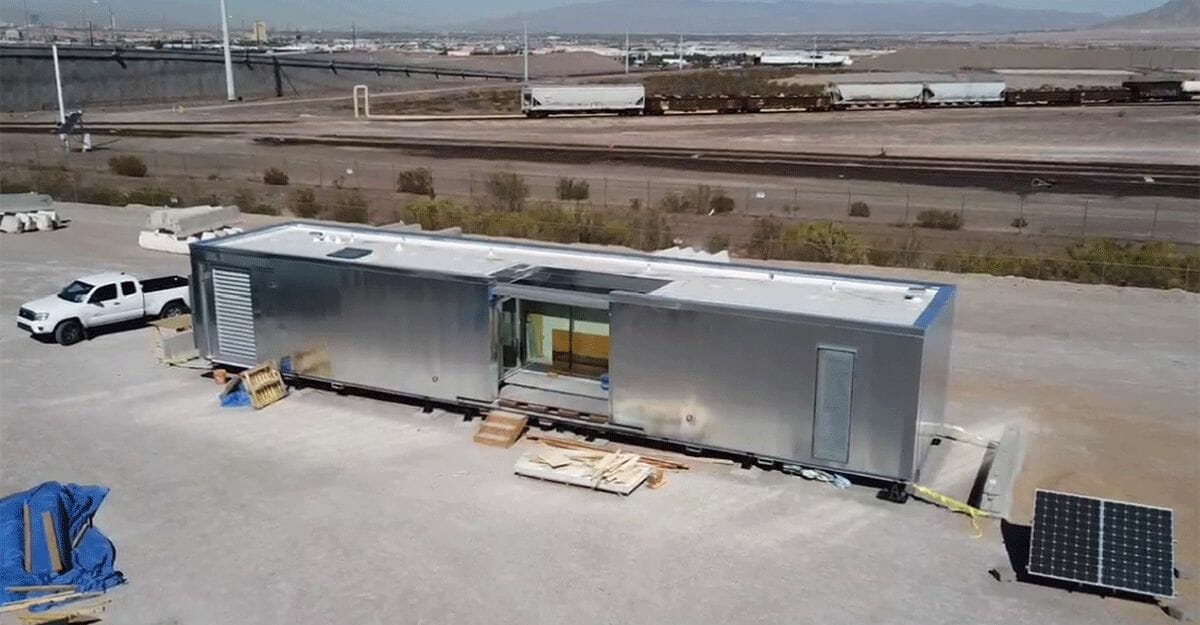
Seen here during its construction, "Mojave Bloom creates an oasis from the bustling downtown of Las Vegas and the Mojave Desert's harsh environment. Designed to be a place of healing for veterans suffering the effects of wartime trauma, the home connects the resident to their environment through a carefully orchestrated procession of sensory experiences," according to its website.
The Mojave Bloom Project
The Solar Decathlon is a two-year design-build competition run by the U.S. Department of Energy. First held in 2002, the collegiate competition involves 10 contests, challenging student teams to design and build high-performance, low-carbon buildings powered by renewable energy. In the United States alone, more than 25,000 students in 790+ collegiate teams have participated in the competition.
Choi was thrilled when the team from UNLV won third place for their entry, Mojave Bloom, a net-zero modular house. It was designed and fabricated from scratch by UNLV students at the Xtreme Cubes plant in Henderson.
Choi was asked to join the team as a subject matter expert in modular construction and construction management. He was co-principal investigator and co-engineering advisor for the team. “At any given time during the 2-year competition, we had more than 50 students working on the project. They were from different majors, including civil engineering, mechanical engineering, architecture, construction management, and computer science.”
On the Mojave Bloom project, Choi “implemented many new technologies, such as 4D scheduling with Procore, sensors, a drone, immersive virtual reality, 3D point clouds, LiDAR, and so on.”
The entire project was closely monitored and documented, and in his presentation at the 2022 World of Modular Choi will present the lessons learned, focusing on the results obtained from the innovative technologies. “The students did an excellent job, but I will talk about where the team made mistakes. New or inexperienced modular companies can learn from our failures and avoid them,” Choi says. “I think these stories will entertain the conference participants.”
About the Author: Zena Ryder is a freelance writer, specializing in writing about construction and for construction companies. You can find her at Zena, Freelance Writer or on LinkedIn.
More from Modular Advantage
Resia: Breaking All the Rules
Resia Manufacturing, a division of U.S.-based Resia, is now offering prefabricated bathroom and kitchen components to industry partners. Its hybrid fabrication facility produces more precise bathroom and kitchen components (modules) faster and at lower cost than traditional construction. Here’s how Resia Manufacturing does it.
How LINQ Modular Innovates to Bring Modular To The Market in the UAE and Beyond
LINQ Modular, with an office and three manufacturing facilities in Dubai, is a modular firm based in United Arab Emirates. The company is on a mission: to break open the housing and construction markets in the Gulf Cooperation Council (GCC) area with modular.
ModMax: Redefining Modular Construction with Confidence and Precision
ModMax was born out of frustration—frustration with five persistent pain points in modular construction: Permitting bottlenecks. Production delays. Rigid designs. Disconnect between “the office” and the field. Lack of transparency and communication.
LifeArk: Disaster-Resilient Housing from Recycled Plastic and 100-year-old Technology
Wee compares LifeArk’s housing units to Yeti coolers, as they are built similarly. Each component takes 15 to 20 minutes to manufacture, has an R-value of 40, and includes molded slots and chases for wiring, plumbing, fire sprinklers, and other utilities.
Building the Future of Modular Edge Infrastructure
The edge data center market is expanding rapidly, driven by the surge in AI workloads, IoT adoption, and the need for localized compute power. In these environments, sustainability, scalability, and reliability are non-negotiable. Cooling is among the most complex challenges for operators—and one of the most decisive factors in long-term success.
Accelerating Light-Gauge Steel Construction: A Semi-Automated Digital Workflow for Off-Site Projects
For construction professionals, the message is clear. By adopting semi-automation and digitalization, companies can deliver projects faster, more accurately, and more profitably, while also building stronger collaboration across teams. The approach is not about replacing people with machines, but about empowering people with better tools and processes.
Why Modular Data Centers Are Gaining Momentum
Artificial intelligence, high-performance computing, and edge applications push the limits of traditional “stick-built” data centers. They take years build, often struggle with high density workloads, and aren’t optimized for deployments near end users. Modular data center platforms are purpose-built to address these challenges, offering flexibility and scalability to adapt to evolving technologies, while opening new opportunities for the modular construction industry.
Supply Chain Innovation in Action: 5 Habits Every Modular Leader Should Practice
By applying these principles to supply chain practices — collaborative planning, strategic procurement, scenario modeling, digital tools, and transparent forecasting — construction leaders can build value chains that are not just efficient and agile, but truly innovative.
Exploring the Role of Modular Integrated Construction (MiC) in Advancing Circular City Principles – A Survey of Stakeholder Perspectives
The survey findings highlight the significant potential of Modular integrated Construction (MiC) in advancing the development of circular cities. By reducing costs, accelerating construction timelines, and minimizing waste generation, MiC offers a promising approach to sustainable urban development.
The Use of MS POLYMER™-Based Sealants and Adhesives in Modular Building
These products combine flexibility and elastic recovery with excellent adhesion to different substrates and have already shown their usefulness in traditional construction. Now it’s time for them to be put to use in the modular construction industry.



